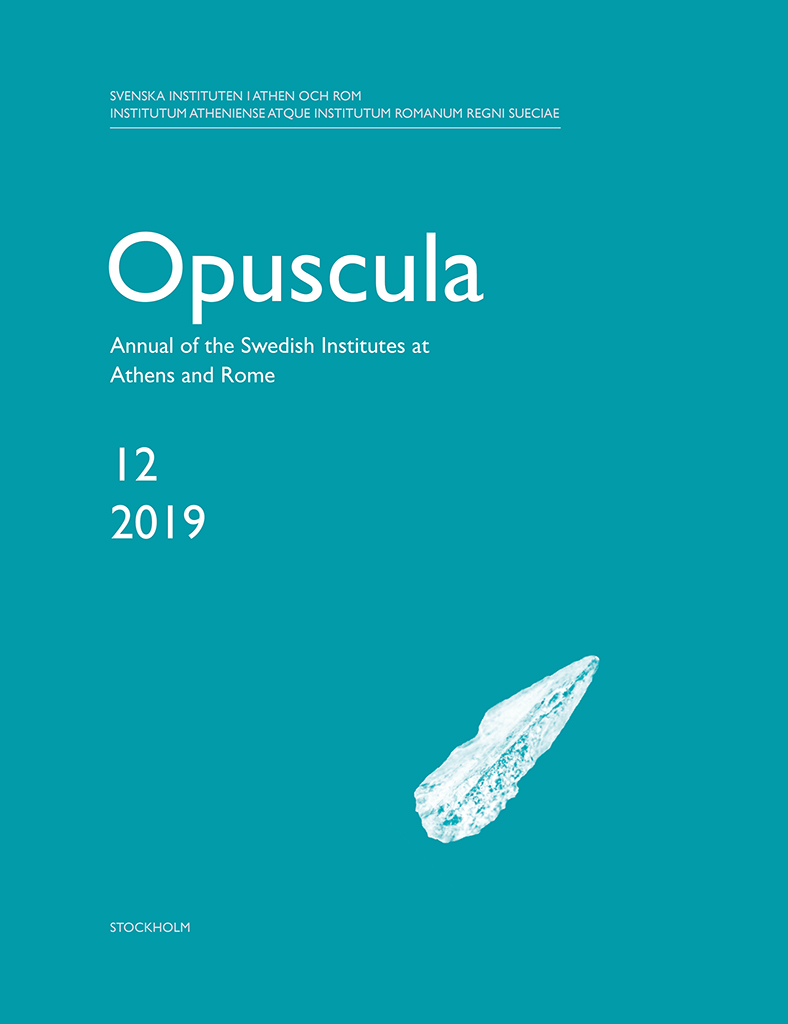Opuscula is published by the Swedish Institutes at Athens and Rome, with the aid of a grant from the Swedish Research Council. Distributed by Eddy.se AB. View journal at ERIH PLUS. All content available with open access. Bioarchaeological field analysis of human remains from the mass graves at Phaleron, Greece. With an introduction by Stella Chryssoulaki and an appendix by Anna Linderholm, Anna Kjellström, Vendela Kempe Lagerholm, and Maja Krzewińska By Anne Ingvarsson (Gustavianum. Uppsala University Museum, Sweden) & Ylva Bäckström (Lund University, Sweden) Abstract In 2016, archaeological excavations undertaken by the Ephorate of Antiquities of West Attica, Piraeus and Islands 3.8 km south-west of Athens, Greece, revealed mass burials of 79 skeletons in three rows. The burials are dated to the 7th century BC. The anthropological field documentation was undertaken by The Swedish Institute of Athens, and followed established bioarchaeological protocols regarding taphonomic processes, age, sex, injuries, and pathological changes. The descriptions and interpretations should be regarded as preliminary field observations. A majority of the individuals were young adult or juvenile males, most of them without signs of active disease and with a generally good oral health status, but with corroded iron shackles around their wrists. Cause of death…
Published by the Swedish Institute at Athens. Distributed by Astrom Editions. New research on old material from Asine and Berbati in celebration of the fiftieth anniversary of the Swedish Institute at Athens Edited by Berit Wells Abstract After an introductory paper on the creation of a Swedish Archaeological School at Athens, ten papers deal with subjects associated with material excavated at Asine and Berbati in the Argolid before the new wave of excavations in the 1970’s. The following subject matters are discussed in relation to Asine: the emergence of an élite in the Middle Helladic (MH) period; pre-firing marks on MH Aeginetan pottery; wooden boxes used as coffins for infants in MH times; MH child morbidity and child mortality; Asine as a case of economic interaction in the Argolid; the provenience and alloy compositions of metal objects diachronically; the source of iron during the Geometric period; bridging the gap in settlement between 700 and 300 BC. Two papers are concerned with Berbati: one underlines the continuity of the Mastos settlement from Early Helladic II into EH III; and one lays out the possibilities for a detailed study of the provenience of the local Mycenaean ceramics. Contents Preface (p. 7) Berit…


